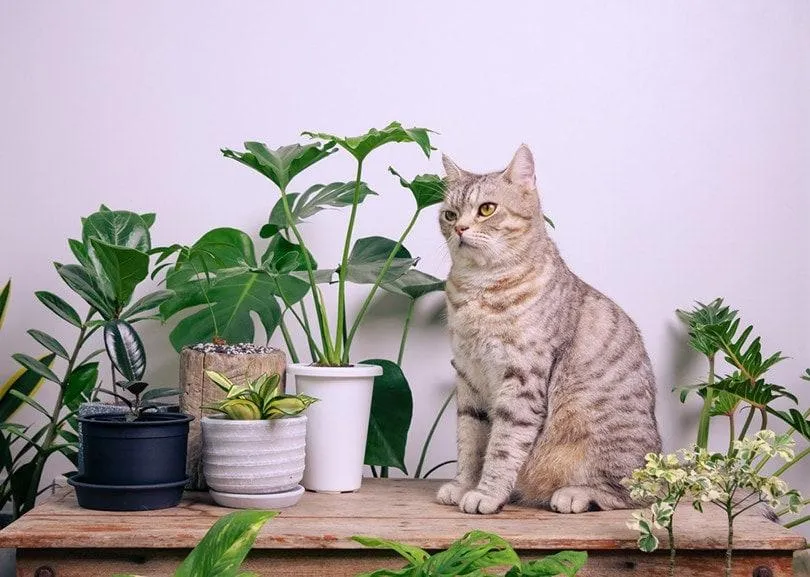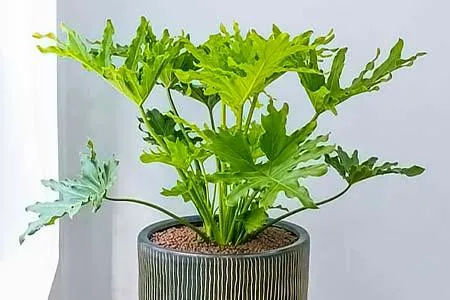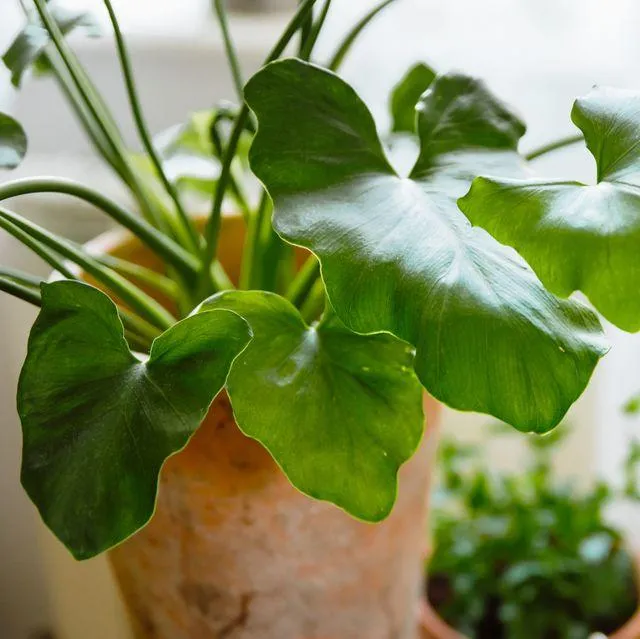Can Cats and Philodendrons Coexist Safely?
Philodendrons are popular houseplants known for their appealing lush foliage and low light requirements. Meanwhile, millions of households welcome feline companions. But can philodendrons and cats peacefully coexist in the same home, or do these species represent a toxic combination? Let’s examine some key considerations in answering this question.
Are Philodendrons Poisonous to Cats?
- While most philodendron species make attractive indoor greenery, it’s important to note that all parts of the plant contain calcium oxalate crystals.
- Calcium oxalate triggers an unpleasant burning sensation if ingested by animals or humans. It can cause swelling and inflammation of the mouth and throat.
- In large enough doses, calcium oxalate poisoning can potentially damage the kidneys in cats.
So in summary – yes, philodendrons should be considered toxic to cats if consumed. The calcium oxalate crystals can cause anything from mild oral irritation to more serious issues depending on the amount ingested. This makes proper cat-proofing crucial with these plants.
Tips for Cat-Proofing Philodendrons
There are some practical steps cat guardians can take to help minimize any risks:
- Choose philodendron varieties with thick, waxy leaves that are less appealing to nibble, such as heartleaf or laceleaf forms.
- Place plants up high, such as on shelves or hanging baskets, out of cats’ reach.
- Use heavy pots without drainage holes that can’t be tipped over. Steer clear of top-heavy arrangements.
- Consider mounting plants on walls using brackets if cats are climbers.
- Scat Mat deterrents near the plants or double-sided sticky tape on foliage may train kittens to avoid them.
- Introduce cats to houseplants gradually to normalize their presence without risk of accidental ingestion.
Monitor Cat Behavior Around Philodendrons
Even when well-cat proofed, it’s wise to keep a close eye on interactions at first. From my experience as a long-time cat owner, not all felines obsess over greenery like some. But it only takes one curious nibble or swat to potentially cause issues.

Signs that a cat may be stressed or enticed by a nearby plant include excessive pawing or scratching at it, attempts to climb for a better sniff, or even nibbling tests. If these behaviors surface, it’s best to temporarily relocate the philodendron to a safe spot until the cat loses interest. Their safety should always come before our aesthetic plant choices.
What To Do if a Cat Ingests Philodendron
Despite our best prevention efforts, accidents do occasionally happen. Here are steps to take promptly if a cat ingests part of a philodendron:
- Call your local vet right away or the Pet Poison Helpline for guidance on symptoms to watch for and next steps.
- You may be advised to induce vomiting using hydrogen peroxide to try and limit absorption if the ingestion just occurred.
- Monitor for signs of oral irritation, drooling, difficulty swallowing. More serious issues could include vomiting, loss of appetite or lethargy.
- Transport the pet and a sample of the ingested plant material if possible for analysis and treatment as needed.
- Be prepared for additional observation, fluid therapy or other interventions depending on severity.
With quick response, most mild cases resolve successfully. But it’s always better to take precautions upfront to avoid potentially costly medical care down the line.
In summary, while philodendrons can certainly coexist in homes with cats when handled properly, their inherent toxicity means some level of risk remains. For conscientious cat guardians, it may be kinder long-term to select non-toxic houseplants instead. But with diligence, philodendron fans can still enjoy these beauties when living alongside feline family members.

In the end, prioritizing pet safety and comfort should take priority over what greenery decorates our interior spaces. After all, they rely solely on our stewardship for their welfare. By thoughtfully cat-proofing or choosing plants wisely, we can nurture our passions without endangering curious kitties. What are your experiences in this area? I’d love to discuss further strategies for harmonious home plant and pet relationships.
Philodendron Plants as Cat Playgrounds
| Plant | Toxicity Level | Cat Safety |
|---|---|---|
| Philodendron scandens | Low | Generally safe for cats with supervision. |
| Philodendron hederaceum | Low | Generally safe for cats with supervision. |
| Philodendron selloum | Low | Generally safe for cats with supervision. |
| Philodendron bipinnatifidum | Low | Generally safe for cats with supervision. |
| Philodendron cordatum | Low | Generally safe for cats with supervision. |
FAQ
-
Are philodendrons toxic to cats?
Yeah basically philodendrons can be sort of poisonous for cats. If a cat eats part of the plant, it could result in vomiting or upset tummy. So it’s best to keep your philodendron somewhere up high or behind closed doors if you’ve got a curious feline friend
-
What are the signs that a cat has eaten philodendron?
If your cat nibbles on a philodendron, some potential symptoms include drooling, diarrhea, or vomiting within a few hours. I’d say monitor your kitty closely after being around the plant just to be safe. The good news is philodendron poisoning often isn’t too serious as long as you get your vet’s advice
-
How bad is it really for cats to eat philodendrons?
While philodendrons are toxic to cats, the severity can vary a lot. If the cat only eats a small bit, there may not be any issues at all. However, eating a large amount could potentially cause more serious problems like abnormal heart rhythm. At the same time, it seems most cases clear up with no long term effects as long as the cat gets quick medical care. Still, best not to take chances with our furry friends’ health!

-
What can you do if your cat eats philodendron?
If you notice kitty nibbling the plant, remove them quickly and contact your vet. Have the plant sample or symptoms info ready. The vet can assess if treatment’s needed. In the meantime, you can do things like induce vomiting unless directed otherwise. Monitor closely for signs of distress. On the other hand, if it was just a tiny bite, keep an eye out but call vet for advice too. Better safe than sorry when it comes to our pets!
-
Are there any non-toxic houseplants safe for cats?
Yep, there are definitely some pet-friendly plants you can enjoy without stress. Pepperomias, pothos, peace lilies and spider plants are apparently pretty cat-proof. Snake plants and english ivy can also withstand a bit of kitty chewing without harm. Maybe consider switching out your philodendron for one of those if cat safety’s a priority. Just do your research first to be 100% certain a species is cat-approved.
-
Can cats get used to philodendrons over time?
It’s possible but I wouldn’t really count on it. Each cat’s different so maybe one will leave the plant alone after a while. However, cats don’t understand concepts of poisonous vs. safe like we do. Remember, their natural instincts are to chew plants. So there’s always a chance kitty will sample another leaf, even if they ignored it before. Better to protect them by keeping toxic plants well out of paws’ reach if possible. Their safety is just too important to leave to chance!
-
What can I do to discourage a cat from chewing philodendron?
A few options are to use sprays or gels with bitter flavors cats dislike, like citrus or capsicum. You can also try covering soil in rocks or pebbles. A covered pot works too. Overall, do your best to cat proof the plant and make it unappealing to chew. Remove any drooping or damaged leaves that may tempt kitty. With any luck, a combination of deterrents can help train them to avoid the philodendron. But like they say – an ounce of prevention is worth a pound of cure!

